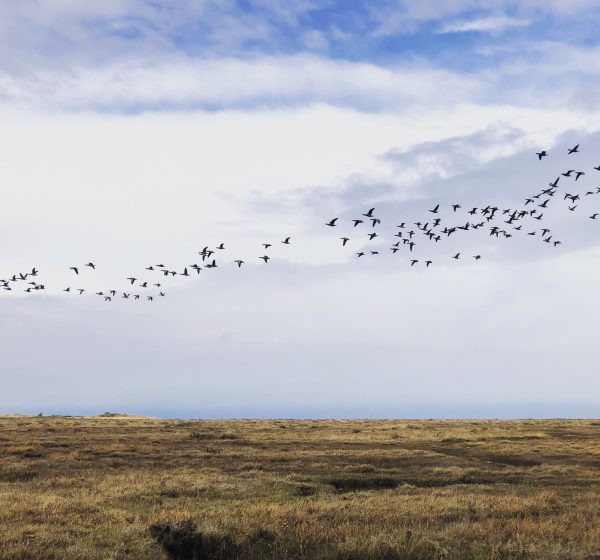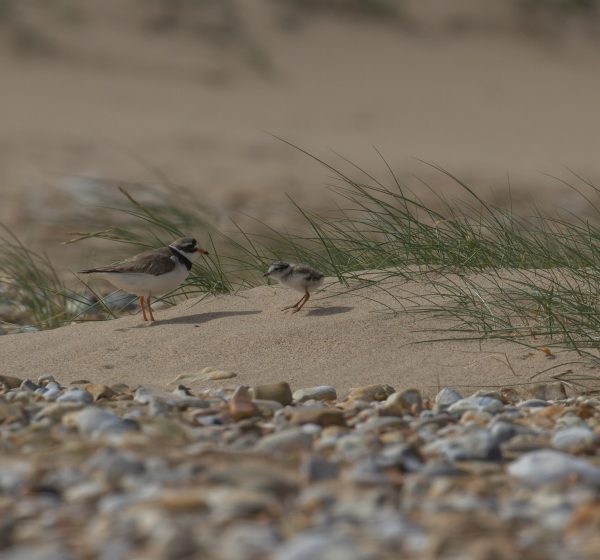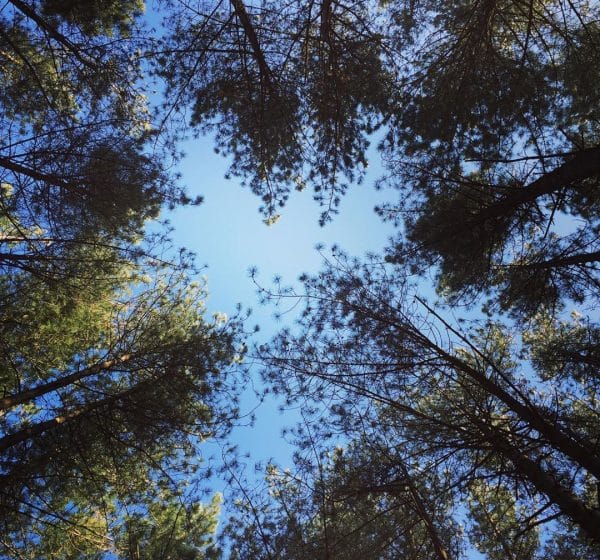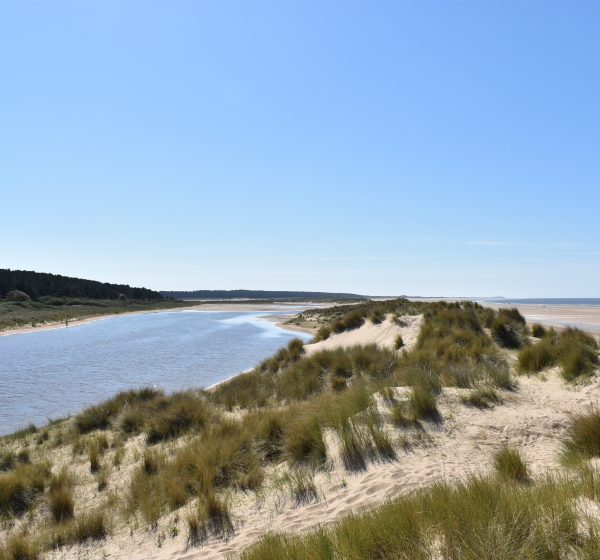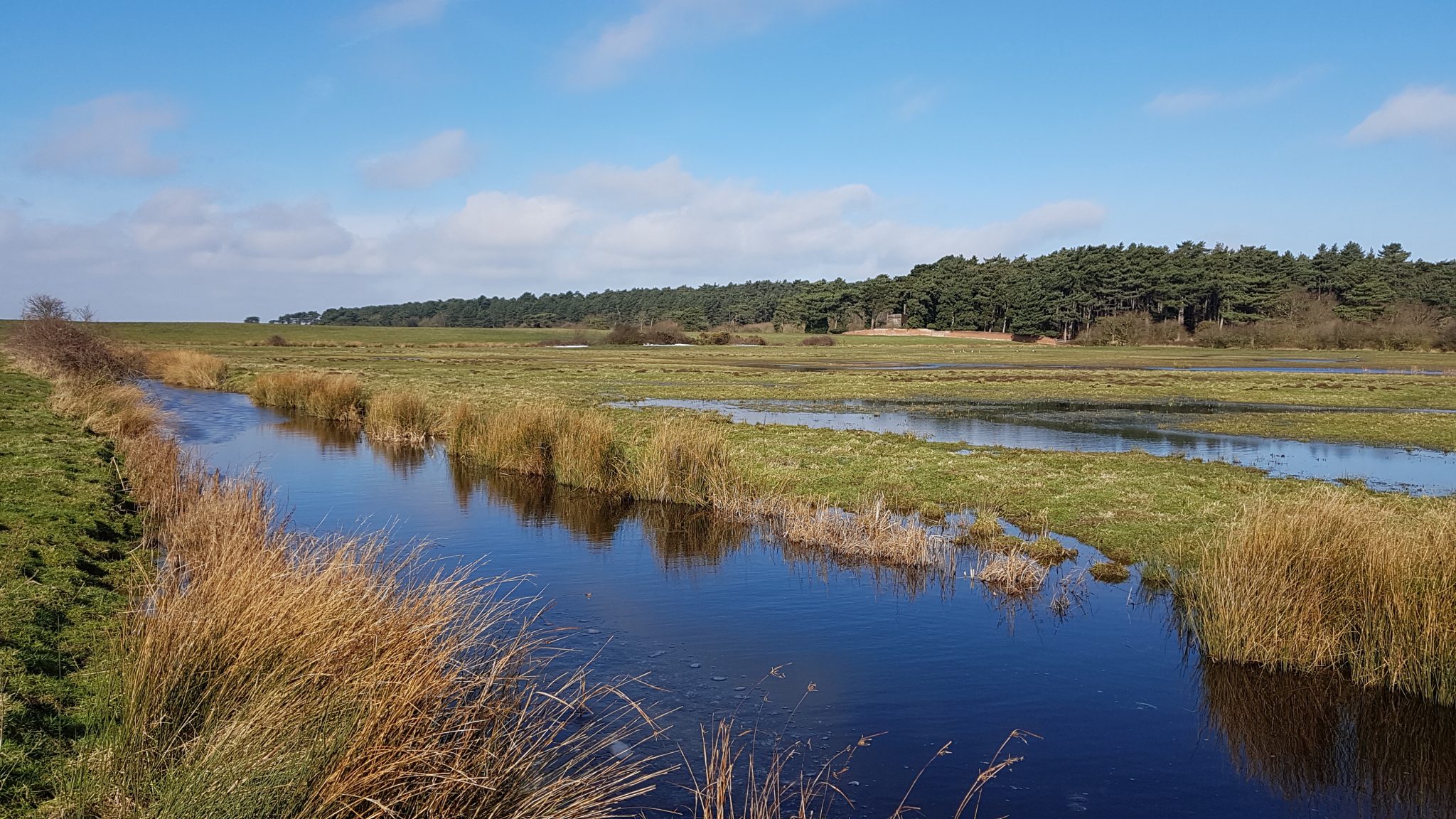
Holkham Beach and Nature Reserve
Grazing marsh
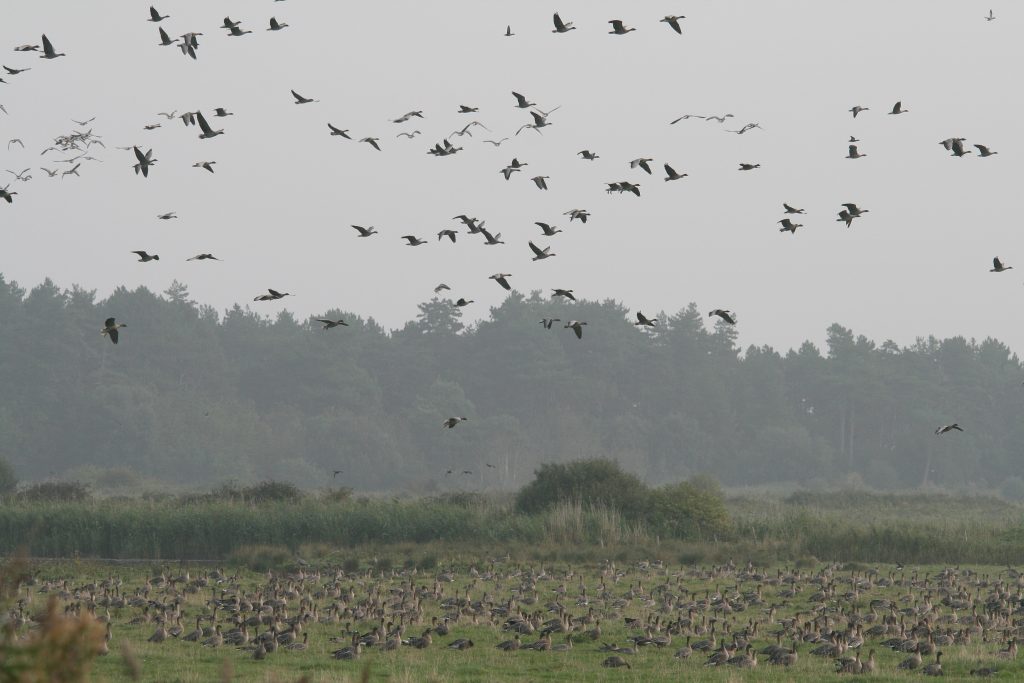

Perhaps the most spectacular change in the ebb and flow of Holkham’s wildlife has been the increase in birds breeding and overwintering on the grazing marshes.
The land between the pine ridge and the coast road was reclaimed from saltmarsh in the 17th to 19th centuries. Until the 1940s this was a sweep of pasture for grazing sheep and cattle, but in the Second World War some areas were ploughed for arable crops. Modern farming methods meant that the water table of the whole marsh was gradually lowered. The old grazing marshes dried out and became much more productive for winter cereals, but were far less attractive for wildlife. However, in the 1980s the area was re-wetted and became increasingly valuable for breeding waders and over-wintering wildfowl.
The population of many breeding birds like Lapwing, Redshank, Oystercatcher and Marsh Harrier are frequently seen soaring above the grazing marsh. Wintering wildfowl have made an astonishing come-back and recent peak counts of 60,000 Pink-footed Geese, 4,000 Brent Geese and 13,000 Wigeon underline the international importance of Holkham. To look out from the hides in late evening, over the golden marshes towards Holkham Park and watch as the geese flight out or as a harrier drifts past against the breeze, is a memorable experience.
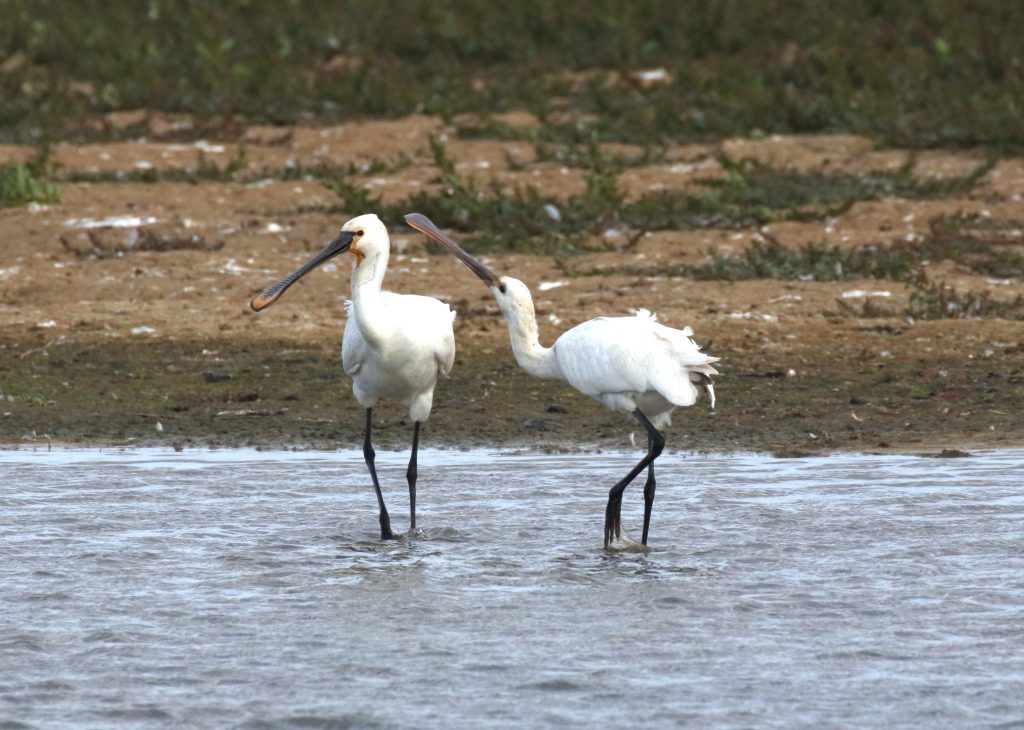
Birds to look for:
- Marsh Harriers displaying or hunting over grazing marshes.
- Grey Heron hunting along ditch edges.
- Lapwings and Redshank displaying over grazing marshes.
- Barn Owls hunting at dawn after light rainfall.
- Shoveler and Gadwall broods along grazing marsh ditches in June and July.
- Spoonbills feeding in the scrapes.
- Cuckoo prospecting for Reed Warbler nests to parasitise.
- Teal displaying in late winter and spring.
- Kestrel hunting over grazing marshes in spring, being chased by Lapwings and Redshanks.

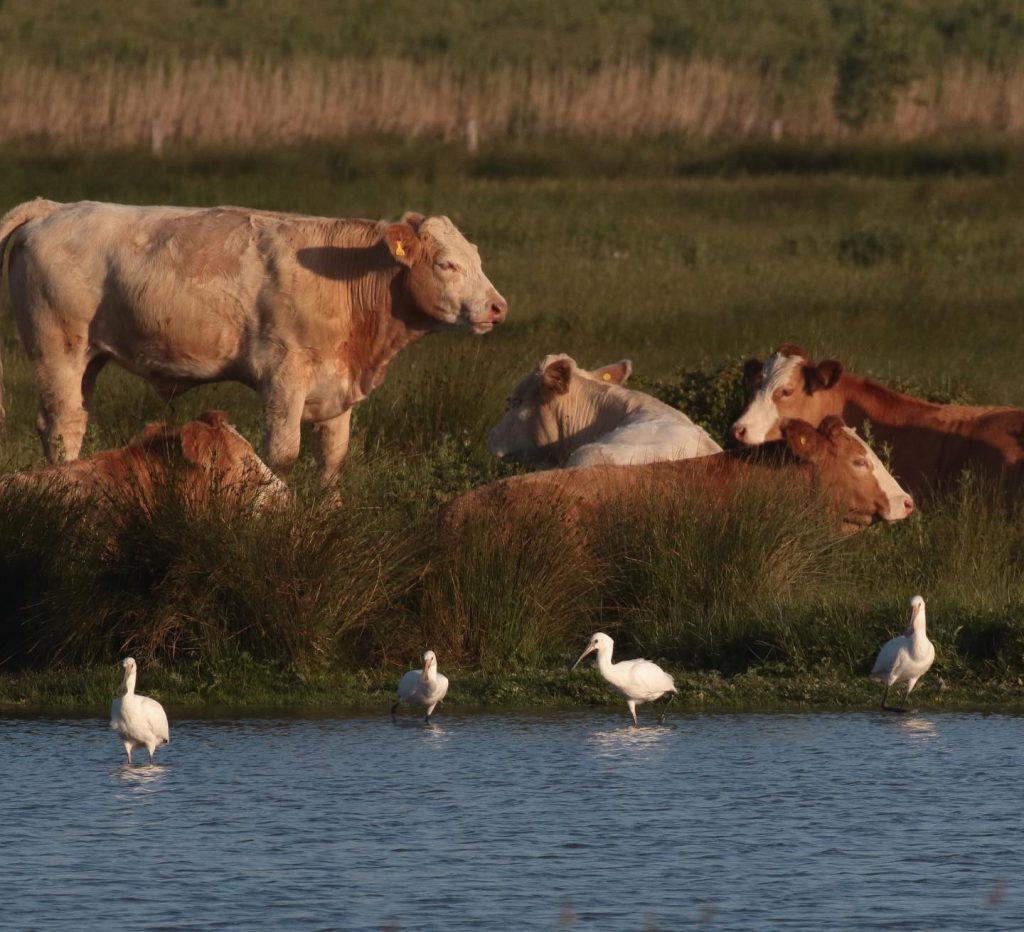

Cow power!
- Cattle-grazing is essential in creating the right conditions for birds on the reclaimed marshes.
- Summer grazing keeps the grass the right length, i.e. 5-10cms by mid-October. This provides the best grazing for wintering Pink-footed Geese, Brent Geese and Wigeon.
- Regular wildfowl grazing during the winter produces a very short turf by the spring, which is ideal for breeding Lapwing and Redshank.
- Suckler herds and store cattle commence the grazing season around mid-May (the late turnout is so that birds’ nests don’t get trampled). The cattle graze throughout the summer and are taken off the marshes around late October.
- The cattle grazing on the marshes are predominantly owned by the Holkham Estate and include a herd of Belted Galloways.
